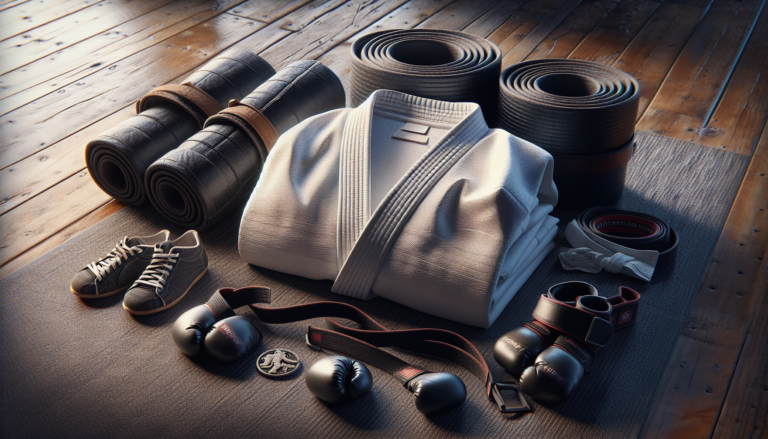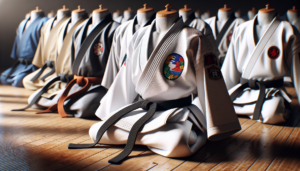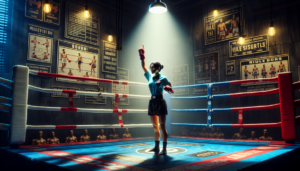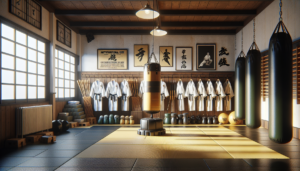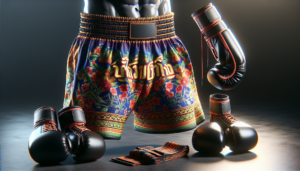Introduction to Martial Arts for Self Defense
Martial arts have long been praised for their ability to enhance physical fitness, mental discipline, and self-defense skills. With a wide variety of styles to choose from, each with its own unique techniques and philosophies, it can be challenging to determine which martial art is the most effective for real-world self-defense situations. In this comprehensive guide, we’ll explore the top martial arts ranked for their self-defense capabilities, helping you make an informed decision when selecting a style to learn.
Why Self Defense is Important
In today’s world, the ability to defend oneself is an invaluable skill. Whether you live in a high-crime area, work late nights, or simply want to feel more confident in your ability to handle threatening situations, learning effective self-defense techniques can provide peace of mind and potentially save your life. Martial arts training not only teaches you how to protect yourself physically but also instills discipline, situational awareness, and the ability to remain calm under pressure.
Engaging in martial arts training can enhance your overall fitness, reaction time, and body awareness, all of which are crucial components of successful self-defense. By committing to regular practice, you can develop the skills and confidence needed to handle real-world threats effectively.
Criteria for Ranking Martial Arts
When ranking martial arts for their self-defense effectiveness, several key factors must be considered. These include:
- Practicality: The techniques taught should be applicable in real-world situations, rather than relying on flashy or overly complex moves.
- Efficiency: The martial art should emphasize techniques that neutralize threats quickly and effectively, minimizing the risk of prolonged confrontations.
- Adaptability: The style should prepare practitioners to defend against a variety of attacks, including strikes, grapples, and weapons.
- Training methodology: The martial art should incorporate realistic training scenarios, such as high-stress drills and sparring, to prepare students for actual self-defense situations.
By evaluating each martial art based on these criteria, we can determine which styles are the most effective for real-world self-defense.
Top Martial Arts Ranked for Self Defense
Krav Maga: Real-World Self Defense
Krav Maga, a self-defense system developed by the Israeli military, consistently ranks among the most effective martial arts for real-world situations. Krav Maga focuses on neutralizing threats quickly and efficiently, using simple, instinctive movements that can be learned by people of all ages and fitness levels. The training emphasizes situational awareness, de-escalation techniques, and the ability to defend against multiple attackers and weapons.
Krav Maga’s practicality and adaptability make it an excellent choice for those seeking a comprehensive self-defense system. The style’s emphasis on real-world scenarios and high-stress training prepares practitioners to handle the chaos and unpredictability of actual confrontations.
MMA: The Ultimate Fighting System
Mixed Martial Arts (MMA) has gained immense popularity in recent years, both as a competitive sport and a self-defense system. MMA combines techniques from various martial arts, including striking, grappling, and ground fighting, making it a versatile and well-rounded style for self-defense. By training in MMA, practitioners develop a wide range of skills, allowing them to adapt to different threats and situations.
The realistic training methods used in MMA, such as full-contact sparring and ground fighting drills, prepare students for the physical and mental demands of real-world confrontations. Additionally, the emphasis on cardiovascular fitness and strength training in MMA can help practitioners develop the endurance and power needed to outlast and overcome attackers.
Brazilian Jiu Jitsu: Mastering the Ground Game
Brazilian Jiu Jitsu (BJJ) is a grappling-based martial art that focuses on ground fighting and submission techniques. BJJ is particularly effective for self-defense because it allows smaller, weaker individuals to defend themselves against larger, stronger attackers by using leverage and technique. By learning to control an opponent on the ground, BJJ practitioners can neutralize threats without relying on striking or brute force.
BJJ training emphasizes live sparring and pressure testing techniques, ensuring that students can apply their skills in realistic situations. The style’s emphasis on problem-solving and adaptability also helps practitioners develop the mental fortitude needed to remain calm and focused during high-stress encounters.
Muay Thai: The Art of Eight Limbs
Muay Thai, a striking-based martial art from Thailand, is known for its powerful kicks, punches, elbows, and knee strikes. The style’s emphasis on efficient, devastating strikes makes it highly effective for self-defense situations where maintaining distance and ending confrontations quickly is crucial. Muay Thai training also incorporates conditioning exercises that develop strength, speed, and cardiovascular endurance, all of which are essential for real-world self-defense.
In addition to its striking techniques, Muay Thai also teaches clinch work and close-range fighting, allowing practitioners to defend themselves in situations where space is limited. The style’s rigorous training methods, which often include sparring and pad work, help students develop the timing, accuracy, and power needed to apply their techniques effectively in high-pressure situations.
Kickboxing: Combining Power and Speed
Kickboxing is a hybrid martial art that combines elements of boxing, karate, and Muay Thai. With its emphasis on powerful strikes and quick footwork, kickboxing is an effective self-defense style for those seeking to maintain a safe distance from attackers while delivering decisive blows. The techniques taught in kickboxing, such as jabs, crosses, hooks, and roundhouse kicks, can be easily adapted to real-world situations, making it a practical choice for self-defense.
Kickboxing training often includes high-intensity cardiovascular exercises and pad work drills, which help develop the speed, power, and endurance needed to overcome attackers. The style’s focus on combinations and counter-striking also teaches practitioners how to create openings and capitalize on an opponent’s mistakes, essential skills for real-world self-defense.
Boxing: The Sweet Science
Boxing, often referred to as “the sweet science,” is a martial art that focuses on punching techniques, footwork, and head movement. While boxing may not incorporate kicks or grappling, its emphasis on efficient striking, evasive maneuvers, and conditioning makes it a formidable self-defense style. By mastering the jab, cross, hook, and uppercut, boxers learn to deliver powerful blows while minimizing their own exposure to attacks.
Boxing training often includes sparring, mitt work, and heavy bag drills, which help develop the timing, accuracy, and power needed to apply techniques effectively in real-world situations. The style’s focus on footwork and head movement also teaches practitioners how to evade strikes and create angles for counter-attacks, crucial skills for self-defense.
| Martial Art | Key Focus | Effectiveness for Self-Defense |
|---|---|---|
| Krav Maga | Real-world scenarios, efficiency | High |
| MMA | Versatility, realistic training | High |
| Brazilian Jiu Jitsu | Ground fighting, submission techniques | High |
| Muay Thai | Powerful strikes, clinch work | High |
| Kickboxing | Striking, footwork | High |
| Boxing | Punching techniques, head movement | High |
Factors Influencing Martial Arts Effectiveness
While the martial arts listed above consistently rank among the most effective for self-defense, it’s important to recognize that several factors can influence their real-world application. These include:
Training Environment
The quality of instruction and training environment plays a significant role in a martial art’s effectiveness for self-defense. Schools that prioritize realistic training scenarios, pressure testing techniques, and developing a strong understanding of self-defense principles will better prepare students for real-world situations. It’s essential to research and choose a reputable school with experienced instructors who emphasize practical application over flashy techniques or belt promotions.
Practitioner Experience
An individual’s experience level and dedication to training can greatly impact their ability to apply martial arts techniques effectively in self-defense situations. Consistent practice, regular sparring, and a willingness to push oneself outside of their comfort zone are essential for developing the skills, reflexes, and mental fortitude needed to handle real-world threats. Even the most effective martial arts will have limited use if the practitioner lacks the experience and confidence to apply their techniques under pressure.
Limitations Against Multiple Opponents
While many martial arts are highly effective in one-on-one confrontations, it’s crucial to recognize their limitations when faced with multiple attackers. No single martial art can guarantee success against numerous assailants, as the dynamics of a fight change significantly when outnumbered. In such situations, self-defense strategies should focus on creating space, escaping to safety, and using the environment to one’s advantage, rather than engaging in prolonged confrontations.
Conclusion: Choosing the Right Martial Art for You
When selecting a martial art for self-defense, it’s essential to consider your personal goals, physical abilities, and learning style. While the martial arts listed in this guide consistently rank among the most effective for real-world situations, the best choice for you will depend on your individual needs and preferences.
Personal Goals and Preferences
Consider what you hope to gain from your martial arts training. Are you primarily focused on developing practical self-defense skills, or do you also want to improve your fitness, compete in tournaments, or explore the cultural aspects of a particular style? Some martial arts, such as Krav Maga, prioritize real-world self-defense, while others, like Brazilian Jiu Jitsu, offer a balance of self-defense and competitive opportunities. By aligning your choice of martial art with your personal goals, you’ll be more likely to remain motivated and committed to your training.
Finding a Qualified Instructor
Once you’ve identified the martial arts that best suit your needs, research local schools and instructors to find a reputable training environment. Look for experienced instructors who prioritize safety, emphasize practical techniques, and create a supportive learning atmosphere. Attend a few classes to observe the teaching style, student interactions, and overall vibe of the school before committing to a program.
Remember, the effectiveness of your martial arts training for self-defense ultimately depends on your dedication, consistency, and willingness to step outside your comfort zone. By choosing a style that aligns with your goals, training under qualified instructors, and consistently pushing yourself to improve, you can develop the skills and confidence needed to protect yourself and your loved ones in real-world situations.

